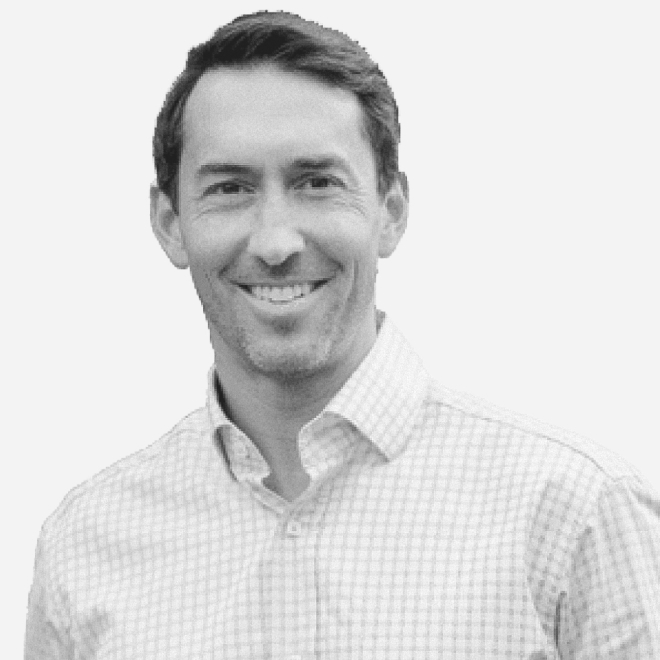
Health


As people became more aware of the importance of a healthy lifestyle, the average lifespan increased. In 2021, nearly 90,000 U.S. residents were at least 100 years old, almost twice as many centenarians as two decades ago.1
Although people are living longer, many are aging faster than their ancestors. For instance, consider two 50-year-olds: one might appear a decade younger, feeling youthful and full of energy, while the other might look older and suffer from multiple chronic conditions. The main difference between the two is their biological age, which as we’ll explain, involves genetic and other factors.
Biological age is a measure of how old your body appears to be based on how well it functions, instead of the number of years you’ve lived. Unlike chronological age, your biological age reflects the actual health condition of your body and suggests the risk of age-related diseases.2
Having a biological age lower than chronological age could mean a longer healthspan—the period of life spent in good health. Physicians often measure biological age using different biomarkers, including blood pressure, cholesterol levels, blood sugar (glucose) and insulin, and inflammation markers. They also assess cellular health markers such as DNA methylation levels and telomere length.
Everybody knows their chronological age. It’s simply the number of years a person has lived, measured from birth to the present day. Biological age, on the other hand, reflects how well or poorly your body is aging based on various physiological and cellular markers. It can reveal the "wear and tear" on your body and highlight areas for improvement.
Chronological age is straightforward and objective: everyone ages at the rate of one year per year, regardless of their health or lifestyle. Biological aging, however, can be faster or slower than chronological aging. For example, tech guru turned longevity enthusiast Bryan Johnson claims to be aging at a rate of 0.69 years per year—much more slowly than the average person.
Two people of the same chronological age can have vastly different health profiles due to factors like genetics, lifestyle, and environmental exposure. Because of this, biological age is a better predictor of disease risk, healthspan, and even lifespan.3
The development of biological age calculators has been a significant milestone in the field of epigenetics. One such tool that stands out for its ease of use and free access is the PhenoAge Calculator.
Developed by Dr. Morgan Levine and her team, the PhenoAge calculator is an algorithm that estimates biological age using specific biomarkers:3
These biomarkers, each associated with aging and mortality risks, are measured as part of standard blood tests (Comprehensive Metabolic Panel, Complete Blood Count, and CRP). Your PhenoAge score may be higher or lower than chronological age, depending on your health, lifestyle, and genetic factors.
Since the PhenoAge calculator first burst into the scene, other biological age calculators have emerged. One notable example is the DunedinPACE algorithm, a DNA methylation biomarker designed to measure the pace of biological aging. Often referred to as a "speedometer" for aging, it estimates how quickly or slowly an individual is aging relative to the normative rate of one year of aging per year of calendar time.4
DunedinPACE was developed using data from the Dunedin Study, a longitudinal study that tracked changes in 19 biomarkers of organ-system integrity over 20 years. This study involved a cohort of all 1,037 babies born in Dunedin, New Zealand, during 1972–1973.4 The algorithm uses DNA methylation data from blood samples to provide a single-time-point measure of the pace of aging.
DunedinPACE is used to predict various aging-related outcomes, including disease, disability, and mortality. It is also associated with social determinants of healthy aging and can be modified by interventions like calorie restriction. This is likely one of the most advanced, to date, biological age clocks and trumps the PhenoAge.
The food you eat is the backbone of health and longevity. Consuming nutrient-poor, calorie-dense foods, excess sugar, unhealthy fat, and processed ingredients may speed up aging and increase the body’s biological age.
While the modern Western diet is linked to higher levels of inflammation, a diet based on whole foods seems to decrease markers of oxidative stress and inflammation.5
One of the key methods to reverse biological age and slow down the pace of aging is caloric restriction.6 Even a modest reduction in daily calorie intake can lead to sustained long-term health benefits.
Research has shown that increasing physical fitness may dramatically reduce your risk of death and promote longevity.7 Exercise also lowers the likelihood of developing chronic disease, such as osteoporosis or even cancer.8 Not only does it help your body stay young and vital, it also positively influences self-image and self-esteem, and reduces anxiety and depression.7
Poor sleep is linked to a significant increase in the rate of epigenetic aging, even in younger people.9 Nighttime rest is the time to restore, regenerate, and ultimately, rejuvenate. Lack of sleep increases the risk of many health conditions, including heart disease, stroke, dementia, and obesity.
Chronic stress, common in modern life, triggers the production of cortisol and adrenaline, which can severely damage your health. Prolonged exposure to these "stress hormones" increases the risk of chronic diseases. Additionally, stress can accelerate aging by affecting the molecules involved in the aging process.10
Tobacco use remains the main contributor to preventable disease and death in the United States.11 Smoking cigarettes has been linked to an increase in many biomarkers of aging, especially DNA methylation levels.12 It is arguably the worst thing you can do for your longevity and overall health.
Although ex-smokers may still have hypermethylated DNA, the methylation levels drop significantly as you quit smoking and resemble those of non-smokers after some time. Therefore, it is never too late to quit.
Environmental factors such as pollution, UV radiation, and toxins may accelerate aging by causing cellular damage and inflammation.13 Air pollution and industrial chemicals may expose the body to free radicals, which harm cells and increase the risk of age-related diseases. Toxins from household products and heavy metals in water or food may stress your body further, impairing cellular repair and disrupting hormones.
A positive aspect of epigenetic changes—changes in how your genes are expressed—is that they can be reversed through lifestyle modifications. Here are some steps you can take to reduce your biological age:
Opt Health’s epigenetic testing provides valuable insights into a variety of epigenetic markers, comparing your result with that of the general population and your expected chronological age. We assess how fast your body is aging based on DNA methylation, histone modifications, telomere length, and non-coding RNA molecules.
Although our physicians make great use of the PhenoAge calculator, we also utilize the TruAge "Omic Age" test. This advanced tool, developed by TruDiagnostic in collaboration with Harvard researchers, uses DNA methylation analysis to estimate your biological age.
Understanding your biological age is the first step to improving your lifespan and healthspan. To get the most out of your aging journey, get in touch with our physicians today.
1. World Population Prospects. United Nations. Accessed November 7, 2024. https://population.un.org/wpp/Download/Standard/Population/
2. López-Otín C, Blasco MA, Partridge L, Serrano M, Kroemer G. Hallmarks of aging: An expanding universe. Cell. 2023;186(2):243-278. doi:10.1016/j.cell.2022.11.001
3. Levine ME, Lu AT, Quach A, et al. An epigenetic biomarker of aging for lifespan and healthspan. Aging (Albany NY). 2018;10(4):573-591. doi:10.18632/aging.101414
4. Belsky DW, Caspi A, Corcoran DL, et al. DunedinPACE, a DNA methylation biomarker of the pace of aging. Elife. 2022;11:e73420. Published 2022 Jan 14. doi:10.7554/eLife.73420
5. Aleksandrova K, Koelman L, Rodrigues CE. Dietary patterns and biomarkers of oxidative stress and inflammation: A systematic review of observational and intervention studies. Redox Biology. 2021;42:101869. doi:10.1016/j.redox.2021.101869
6. Martinez-Lopez N, Athonvarangkul D, Singh R. Autophagy and aging. Adv Exp Med Biol. 2015;847:73-87. doi:10.1007/978-1-4939-2404-2_3
7. Castillo-Garzón MJ, Ruiz JR, Ortega FB, Gutiérrez A. Anti-aging therapy through fitness enhancement. Clin Interv Aging. 2006;1(3):213-220. doi:10.2147/ciia.2006.1.3.213
8. Gremeaux V, Gayda M, Lepers R, Sosner P, Juneau M, Nigam A. Exercise and longevity. Maturitas. 2012;73(4):312-317. doi:10.1016/j.maturitas.2012.09.012
9. Carskadon MA, Chappell KR, Barker DH, et al. A pilot prospective study of sleep patterns and DNA methylation-characterized epigenetic aging in young adults. BMC Res Notes. 2019;12(1):583. doi:10.1186/s13104-019-4633-1
10. Zannas AS. Epigenetics as a key link between psychosocial stress and aging: concepts, evidence, mechanisms. Dialogues Clin Neurosci. 2019;21(4):389-396. doi:10.31887/DCNS.2019.21.4/azannas
11. Current Cigarette Smoking Among Adults in the United States. Centers for Disease Control (CDC). September 13, 2024. Accessed November 7, 2024. https://www.cdc.gov/tobacco/php/data-statistics/adult-data-cigarettes/index.html
12. Yang Y, Gao X, Just AC, et al. Smoking-Related DNA Methylation is Associated with DNA Methylation Phenotypic Age Acceleration: The Veterans Affairs Normative Aging Study. International Journal of Environmental Research and Public Health. 2019;16(13):2356. doi:10.3390/ijerph16132356
13. Jafri AB. Aging and toxins. Clin Geriatr Med. 2011;27(4):609-628. doi:10.1016/j.cger.2011.07.007
Your health, your terms. Discover how personalized care can transform not just the way you feel, but how you live.